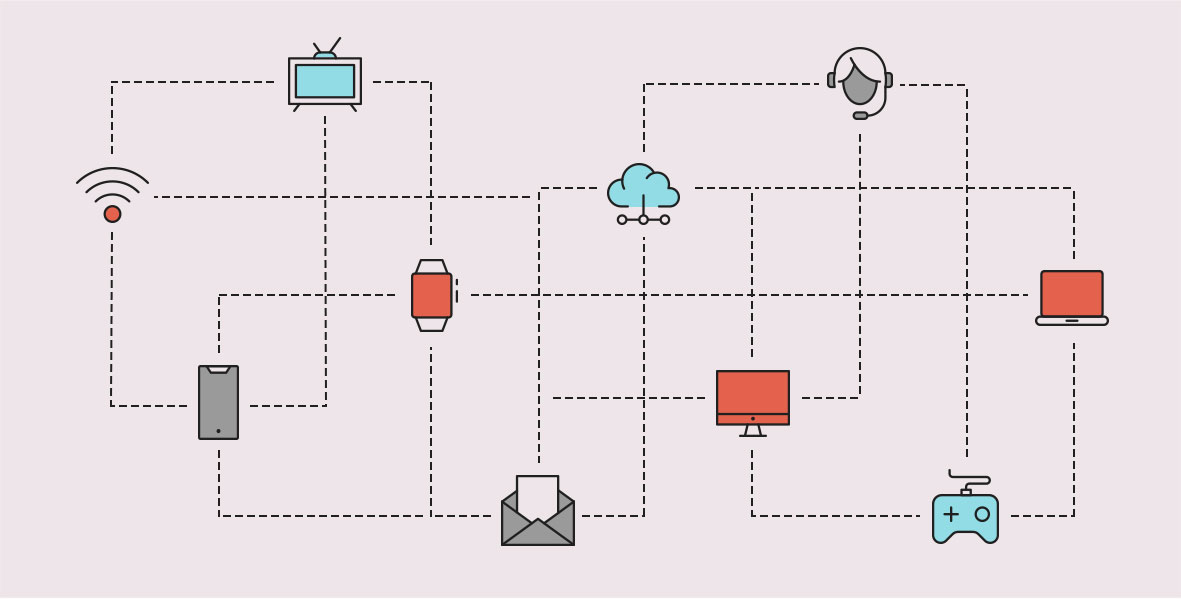For today’s marketers, analytics is the name of the game. The shift to digital has provided a wealth of trackable insights, with many campaign decisions relying on performance data to prove each channel’s worth.[1] Unsure of how to measure its ROI, marketers often leave direct mail off the table.[2] But is that leaving a valuable opportunity behind?
Seasoned marketers know the unique role direct mail can play in the customer journey — it has long had the power to precisely target and engage consumers. In discussions with key decision-makers at several retail, B2B and agency organizations, however, we hear that many struggle to support mail’s place in their modern-day campaigns.[3]
“I need numbers to justify what we can expect with that buy.”
— VP of Marketing[4]
Direct mail attribution is possible. The key is tying direct mail into a larger digital campaign using the right technical innovations. Read on to see how advertisers are measuring the ability of direct mail to amplify their message and drive action.
Have you been successful measuring the ROI of your direct mail campaigns?
How to Track Direct Mail ROI
See how various methods of attribution can help direct mail work with digital to provide measurable results.
Retargeted Direct Mail
Retargeted direct mail is a valuable component of an omnichannel campaign. In synch with your digital channels, this tactic automates much of the direct mail journey, including sending direct mail to your online visitors after they’ve reached specific triggers.
This allows for highly personalized messaging, as well as the gathering of additional data and insights into their behaviors. For example, if a customer visits your website but doesn’t purchase, you can send out an incentive—tying their IP address to a home address—and track whether it converts.
Similarly, you can automatically retarget those who abandon carts. This happens via email all the time, but retargeting emails can get lost in the mix when consumers receive nearly 90 email solicitations a day, compared to just 2.5 pieces of mail.[5]
QR Codes
More popular than ever, the small square barcode known as a QR Code®[6] is the perfect merge of offline and on. With a unique scannable code added directly to a mailpiece, your audience can easily take the next step toward a sale, whether that’s visiting your site, finding your store, redeeming a coupon or other actions. And you’ll know exactly what and when they do it.
What can customers do with a QR Code?
- Go directly to an order page to purchase instantly
- Watch a video to learn more about your product
- Download an exclusive coupon
- Pinpoint your location on their map application
- Add an event directly to their calendar
- Easily contact your sales team or customer service
QR Codes are great for an immediate action, and they encourage it by being so simple. Consumers don’t have to go to a computer and enter a URL. They’re engaged right on their phone, which means you are able to gather a wealth of data that can be used to nurture the relationship—and to plan future promotions.
Match-Backs
Match-back reporting is the process of matching untracked sales with your mailing list. By matching conversions during a promotion with the customers on your list, you’ll be able to attribute at least some level of credit to direct mail for the sale.
It’s important to utilize a match-back to determine campaign performance more fully. Not all users will take advantage of a QR Code or other specific URL, but they will be driven to act, and therefore direct mail merits attribution for the sale. Matching your list with a sale also gives you information about the list, offer and creative, which enables you to optimize going forward.
Two things to note: A match-back process is not instant, so you will have to be patient with results. Mail’s lifespan in a home is longer than an email’s, for example—it may sit or be shared with others in the household before being used—so a period of match-back analysis could be from 30 to 90 days.
Second, you may want to consider a holdout strategy to further validate your match-back findings. This involves intentionally withholding your mailing from a determined group to serve as a control to compare with the sales results from the mailed group. While not totally foolproof in a multichannel campaign, this can help attribute lift to direct mail.
Promo Codes and Coupons
Consumers expect and look for special offers with direct mail, with 77% saying a discount is the most effective element of a marketing mailpiece.[7] Coupons can introduce new customers to your business and encourage existing customers to come back to your store. Used strategically, coupons can even help drive sales of a profitable item or service.
Coupons can also help you track your campaign’s performance, particularly when your mailpiece contains a unique offer code. Any time the promo code is used for a sale, whether online, over the phone or in person, it will be attributed to your direct mail. In some cases, sending out a promo code will also help you build your online database by requiring an email address in order for it to be used.
Vanity URLs
Similar to how QR Codes function, a vanity URL in your direct mail makes it easier to drive users online to complete a specific action. Meant to be short and memorable, these unique web addresses not only help the shift to your digital channel happen quickly, they also track the encounter to measure specific tactics.
Let’s say you are running TV, out-of-home and direct mail ads. If each promotion features a different URL, you’ll be able to see how each converted, just as you would with online ads. For the best memorability and metrics, give each tactic a clever domain name that works with your campaign theme and drives to a landing page.
Vanity URL Do’s
- Short
- Memorable
- Relevant
- For Example: GimmeFreeHotdogs.com
Vanity URL Don’ts
- Complicated abbreviations
- Long names with backslashes
- No specific call to action (for awareness campaigns, stick to your domain name)
You can also go further to create personalized URLs (PURLs), which are unique to each customer and lead to custom landing page, a powerful way to bridge the gap to digital.
Post-Purchase Surveys
The value of sending your customers a post-purchase survey is twofold: First, you can ask how they came to your business, and therefore attribute the sale to that tactic. Second, following up can help maintain customer satisfaction.
41% of sales are generated by repeat purchases from satisfied customers.[8]
A post-purchase survey can be as simple as a question on the checkout confirmation page, or it can be sent out later as a check-in to see how they feel about your product and experience. Ideally you can pinpoint how they heard about you and gain insights that can be used to nurture the relationship going forward.
Business Reply Cards
The familiar prepaid business reply card is a popular method for gathering responses to direct mail. These postcards are attached to or included in your mailer and are easy for prospects to fill out and send back.
With a few simple questions, they enable you to gather valuable information about your audience that you might not receive with other response methods. You might even offer an incentive for returning the card, which can boost replies. Just remember, there are format guidelines, and you will need a BRM permit to receive Business Reply Mail.
Which attribution method are you most likely to try?
Key Takeaway
Direct mail is a proven performer. However, with an array of internal teams and media tactics vying for a piece of the budget, it’s no wonder the aspect of a clear and real-time ROI often wins.
Today’s smarter direct mail can help justify the spend. With a comprehensive attribution model, merging direct mail with digital, you can not only engage with consumers across numerous channels, but can also have the power to measure the impact more definitively.
Footnotes
keyboard_arrow_down- [1]USPS, Direct Mail Decision Making Report, Jan. 6, 2022. arrow_right_alt
- [2]Ibid. arrow_right_alt
- [3]Ibid. arrow_right_alt
- [4]Ibid. arrow_right_alt
- [5]Michael Peach, “Mastering Direct Mail Attribution,” Lob, March 23, 2020. arrow_right_alt
- [6]QR Code is a registered trademark of DENSO WAVE INCORPORATED. arrow_right_alt
- [7]USPSDelivers.com Research — Full Report, Qualitative and Quantitative Results, Summit Research, February 2021. arrow_right_alt
- [8] Ash Maynor, “Why merchants should have a post-purchase survey,” MESA, March 15, 2022. arrow_right_alt
 search
close
menu
search
close
menu


